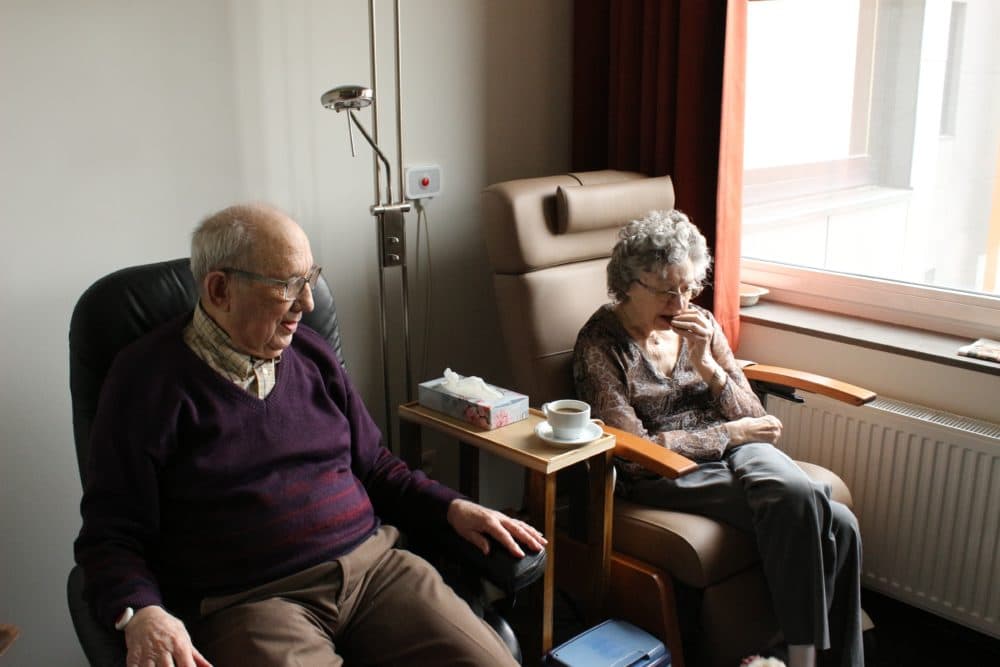Advertisement
Commentary
Who Will Care For Aging Americans?

Michelle spent all her free time taking care of her 80-year-old father with dementia. When she returned home from her night shift, she would bathe him, give him his medications, change him and feed him, before falling asleep exhausted on the couch. Despite her best efforts, he returned to the emergency room every few months with an infection, confusion or breathing problems, and with each hospitalization, he came home weaker. So she did more for him.
I met Michelle (a pseudonym) during her father’s third hospitalization that year; he had been admitted for pneumonia. Her tired eyes scanned the ground as I listened to her father’s lungs.
“How are you doing?” I asked.
“I don’t know what to do. I can’t take care of him at home anymore.”
Due to advances in healthcare, Americans are living longer, and unfortunately this also means more Americans than ever are trapped in a long-term care system that fails to support them and their families.
It is predicted by 2060 there will be 98 million over the age of 65. Most older Americans prefer aging and dying at home rather than moving into nursing homes. Staying at home is also safer. However, despite this preference, 24.9% of Medicare beneficiaries still pass away in nursing homes.
... [M]ore Americans than ever are trapped in a long-term care system ...
The discrepancy occurs partly because family members who care for elderly relatives at home face arduous work with little support. The AARP estimates that 40 million family caregivers provide $470 billion in uncompensated care. They help the 26% of elderly adults who need help with household activities such as dressing, feeding and going to the bathroom. Beyond these daily household activities, family members are increasingly providing complex healthcare tasks such as managing feeding tubes and catheters, sometimes without training.
These responsibilities can make it difficult to also work outside the home, thus jeopardizing income and job security. Sixty-one percent of employed caregivers report having to request workplace accommodations such as coming in late to work, leaving early, reducing work hours or taking time off. It’s no wonder that caregivers are more likely to have depression, stress and less subjective wellbeing than non-caregivers.
However, hiring professional caregivers can cost up to $30 an hour, a luxury that many cannot afford. In some states, the government offers some financial support through the Medicaid program. However, these programs often offer limited support and only to low-income adults.
Faced with the impossible task of taking care of their elderly family members at home, many are compelled to place them in nursing homes, a decision fraught with its own challenges. It costs $6,844 per month for a semi-private room and board in a nursing home, on average in the U.S. Medicare has limited coverage for long-term care in nursing facilities, and only about 10% of Americans have long-term-care insurance because it is expensive and can exclude care for many medical conditions.
It costs $6,844 per month for a semi-private room and board in a nursing home ...
Thus elderly Americans are encouraged to spend down their assets so that they can qualify for Medicaid, which traditionally offers long-term care benefits for the poor. Medicaid currently covers 5/8 of patients in nursing homes. Medicaid spending now accounts for 1/6 of all the dollars in the healthcare market, a number that will grow unsustainably as more elderly resort to Medicaid for its long-term care benefits.
There have been various attempts to fix the broken long-term care system. Washington State recently passed the Long-Term Care Act. Workers contribute 0.58 cents per $100 earned over 10 years and they are entitled to coverage of up to $36,500 for home services, transportation, food delivery and caregivers. Maine attempted to pass the more ambitious Universal Home Care initiative, which would have provided free-at-home services for anyone needing long-term care regardless of income level. However, voters opposed the referendum, which would have been financed by an increase in income taxes.
A true solution would include multiple components. First, it would include more resources to support elderly patients who want to stay at home. A good model is the PACE program, which offers comprehensive, community-based care for frail, elderly patients that includes interdisciplinary teams providing services such as healthcare, transportation and adult daycare. Second, it would strengthen the long-term-care insurance market, so elderly adults could purchase reasonably priced plans for home-based or nursing home care without resorting to Medicaid. Finally, it would provide formal training and support for home-based caregivers.
Michelle was able to place her father in a nursing home. She visits him as often as she can. When I last spoke to her, she said that he wanted to come home. But given how difficult it had been to care for him at home, she had resigned herself to the fact that this would be impossible.
